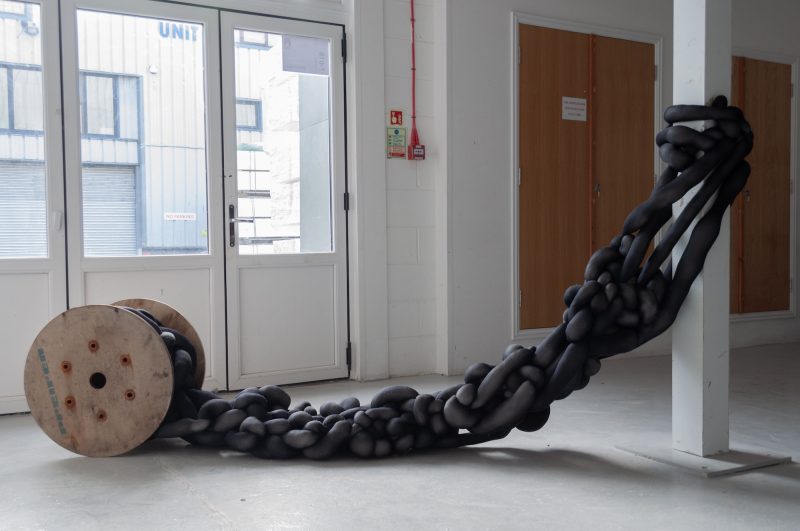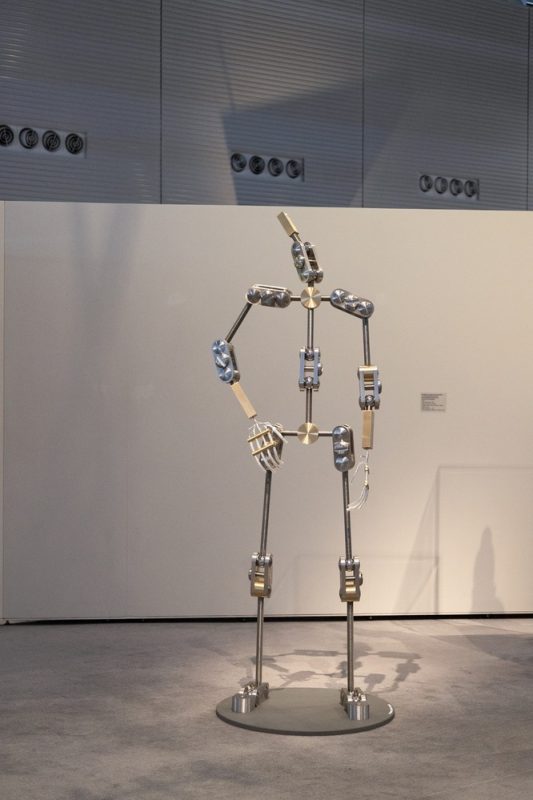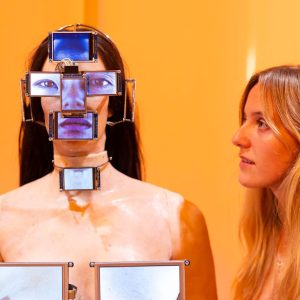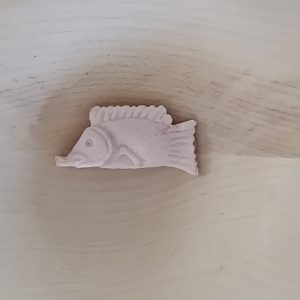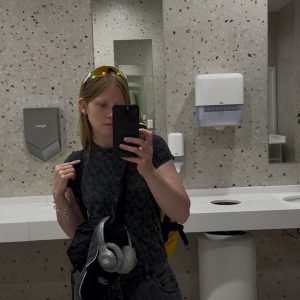
Rotting glamour … Jean-Luc Moulène’s Purple Graces, 2016. Photograph: Courtesy the artist and Thomas Dane Gallery, London
![]() This article titled “Jean-Luc Moulène review – who knew French art could be so funny?” was written by Jonathan Jones, for theguardian.com on Thursday 14th April 2016 16.39 UTC
This article titled “Jean-Luc Moulène review – who knew French art could be so funny?” was written by Jonathan Jones, for theguardian.com on Thursday 14th April 2016 16.39 UTC
I am in a ghostly garden of some forgotten chateau where grey lichen-marked statues loom in the mist among once-pollarded, now madly overgrown, trees. OK, I made up the chateau, the mist and the trees – but they are all evoked by Jean-Luc Moulène’s eerie installation of concrete rococo sculpture.
At first glimpse his groups of nudes and fauns appear time-worn and authentic. Then you see how he has hacked through these concrete casts with a powerful cutting tool and spliced them together in weirdly unsettling groups. Buttocks and breasts, goat legs and modest downcast eyes are disturbingly spliced together in a manic montage, the classical tradition gone psycho. Who says French culture is dead?

Sure, they’re are all reading the pessimistic portrayals of a nation in decline in the novels of Michel Houellebecq. Moulène’s carnival of broken forms similarly speaks of a proud culture in self-conscious decay. One of his collage sculptures is painted in the colours of the Tricolour, with a seedy suggestion of rotting glamour: red lipstick, a blue trumpet and white fake breasts. A huge fly has landed beside these hilarious icons of France’s fading glamour.
Yet just as Houellebecq’s audacious novels paradoxically prove the vitality of the very culture whose death they diagnose, Moulène’s scintillating, macabre and joyful creativity is a spectacular manifestation of all that is sensual and subversive in French art, from Watteau to the Surrealists and Godard. Indeed, it seems clear now what happened to Damien Hirst’s talent. It took a French holiday.
Moulène’s concrete wolf head, bisected to reveal a real animal skull, has the rawness of early, exciting Hirst. So does a drawing of a creature that is half ant and half dog, while the things Moulène does with pigs reveal a genius for charcuterie. This is modern art at its most viscerally funny and wickedly liberating.
Thank God not every artist of our time is lost in navel-gazing theory and subdigital drivel. And yet, few artists convey the qualities of now as acutely as Moulène – later this year he gets a major solo show at the Pompidou in Paris. His is an art of anxiety and distraction, restlessness and insatiable channel-switching. Lots of artists are using a collage aesthetic to evoke the information bombardment of our age, but most end up in trite silliness.

Moulène makes montage work, because his sensuality and his impatience collide in a way that is both exhilarating and traumatic. All the sawing and chopping and remixing releases new and potent images. He cannot see a beautiful statue without imagining it bisected and shoved up against other fragments to create a nightmare version of the Three Graces. He cannot sit in a garden chair without picturing death’s sickle poised overhead.
His spookiest sculpture, a cheap plastic garden chair painted blue, does indeed have a tall scythe attached, ready to fall on your head as you sit in your garden ruminating. This, and other works in the upstairs gallery, claim inspiration from Rimbaud, the godfather of all cut-up imagery: there’s an intelligence and literary depth to Moulène’s art that plays marvellously against its vulgar violence.
A concrete cat holding a human skull presides over the debacle, its mystic eyes seeing the madness that erupts from sliced and spliced fragments of a world spiralling out of control. Who knew le fin could be so funny?
• Jean-Luc Moulène is at Thomas Dane Gallery, London, until 28 May
guardian.co.uk © Guardian News & Media Limited 2010
Published via the Guardian News Feed plugin for WordPress.

